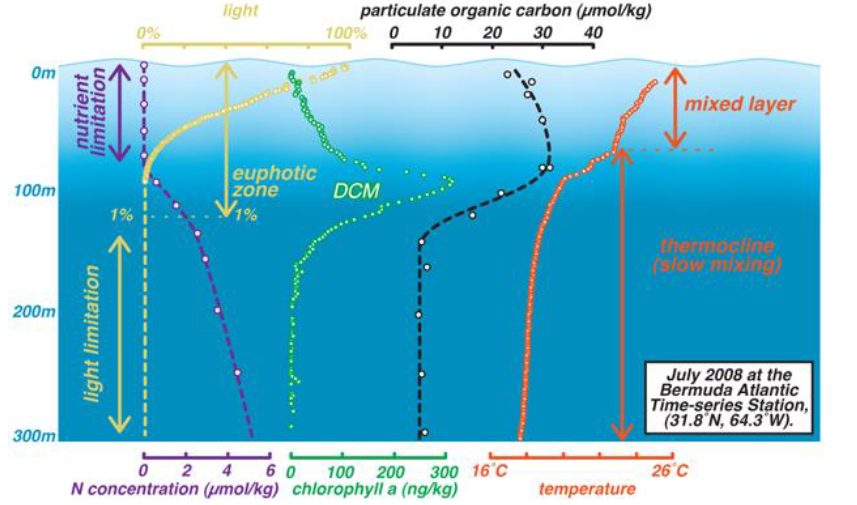EAES Ch. 7 Aquatic Biodiversity
1/11
There's no tags or description
Looks like no tags are added yet.
Name | Mastery | Learn | Test | Matching | Spaced |
|---|
No study sessions yet.
12 Terms
Aquatic Environments
Limiting factors: Sunlight, temperature, salinity, O2, nutrients CO2, NO3-, PO43-

Coastal (Neritic) Life Zone
Continental Shelf, ~200m max
Abundant light, nutrients, O2, mixed by wind / currents
Most of the life, 90% of Primary Production
Estuaries, Wetlands
Mixed slat and fresh water (brackish)
Variable productivity due to temperate, turbidity and human influence (degrades)
Wetlands can act as pollution filter, and carbon sink
Rocky and sandy shores
Intertidal zone, higher energy wave environments, light, turbidity, nutrients
Wet/dry cycles from daily tides, may have higher wave energies
Intertidal Zone, tidal pools, lagoons
Coral Reefs
Broad diversity, abundant light, nutrient poor, high productivity
Affected by ocean acidification, turbidity due to land runoff
Gradually grow upward with sea-level rise
Open Sea
Off continental shelf with significant depths 0-11’000m
Euphotic - lots of light, O2, higher temperature, low nutrients, lower salinity, complex food web
Bathyal - very low light. lower temperature, higher salinity
Abyssal / Hadal - no light, nutrient rich, cold, high salinity
Layered Lakes
Littoral Zone (nearshore): light, nutrients, O2, high diversity, medium primary production
Limnetic Zone (offshore): light, high primary production, O2
Profundal Zone: low/no light, no primary production, nekton
Benthic Zone: lake bottom, low/no light, no primary production, decomposers and detritus feeders
Lake Temperatures
Epilimnion (warm top), Hypolimnion (cold bottom)
Temperature changes due to seasons. Top heating during summer, top cooling during winter causes stratification
Turnover in fall/spring due to Density difference (warm/cold water). Turnover mixes O2 and nutrients
Oligotrophic
Nutrient poor
Low Primary Production
Ex: high mountain lake
Eutrophic
Nutrient rich
High primary production
Lots of life
May become overly rich due to agricultural runoff
Freshwater stream
Rainfall on continent
Storage in snow, ice, lakes, wetlands, groundwater
Runoff flows downslope towards ocean
Freshwater wetlands
Form in areas of low slope and abundant water
Typically in / near river flood plains
Marsh > Swamp > Fen > Bog